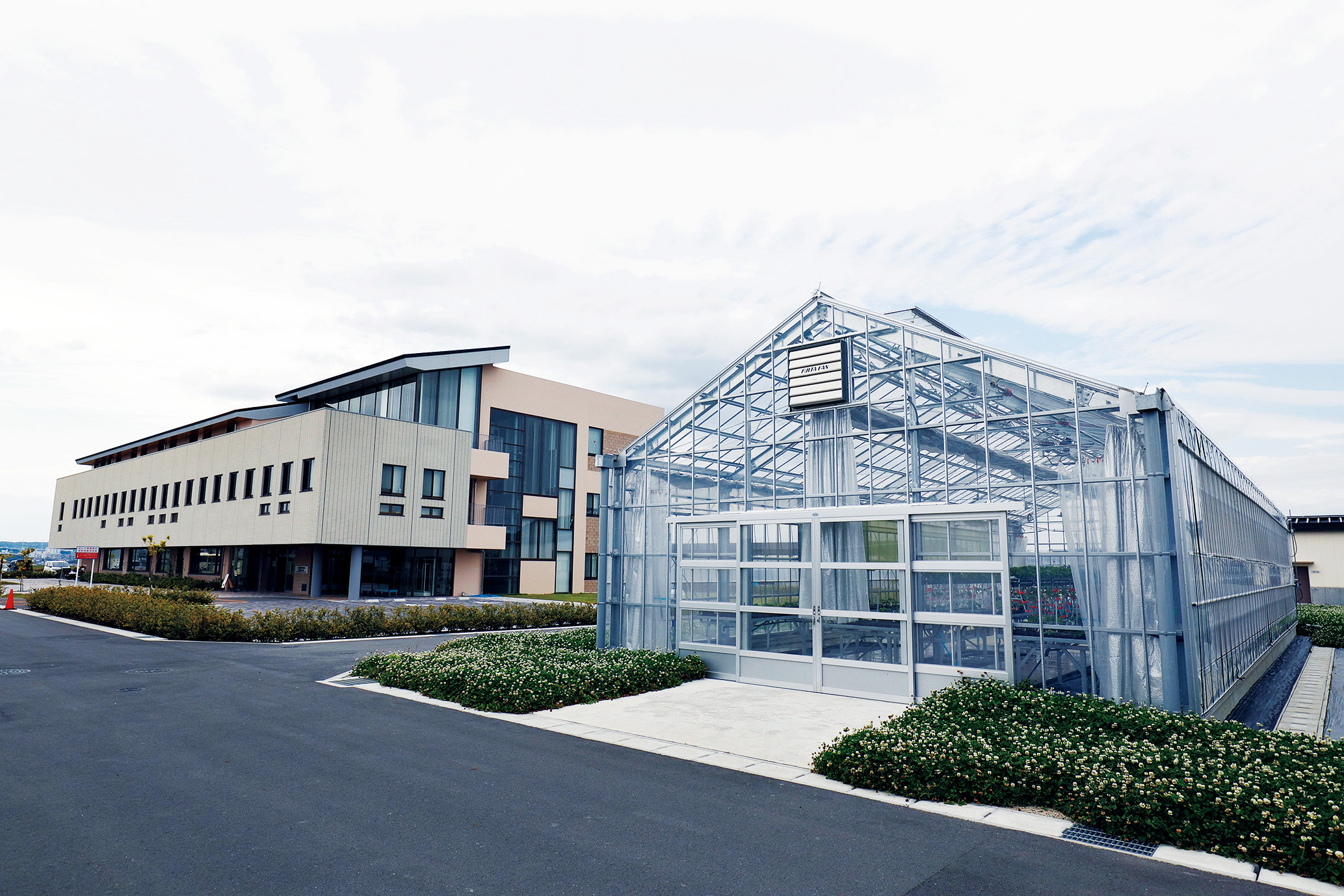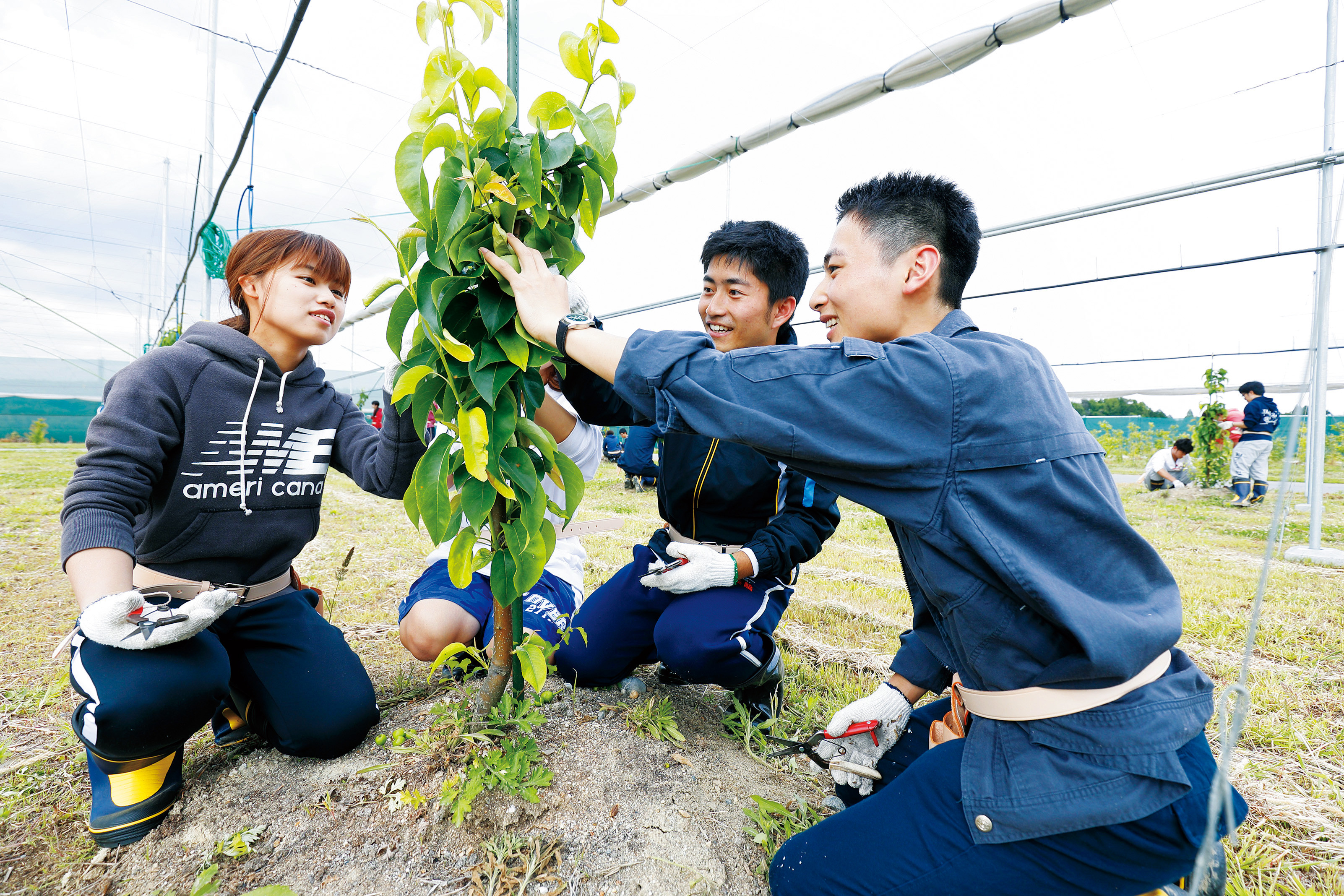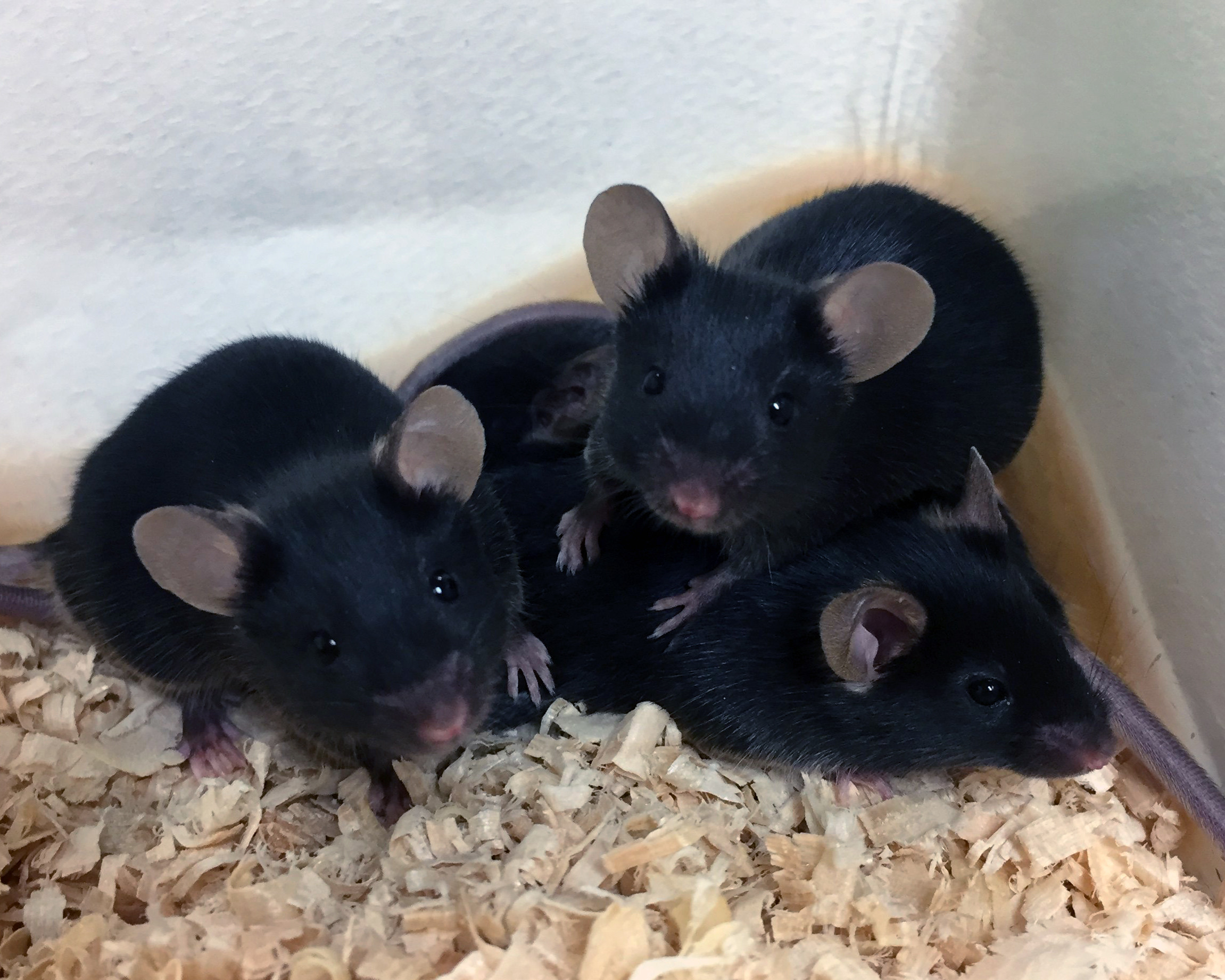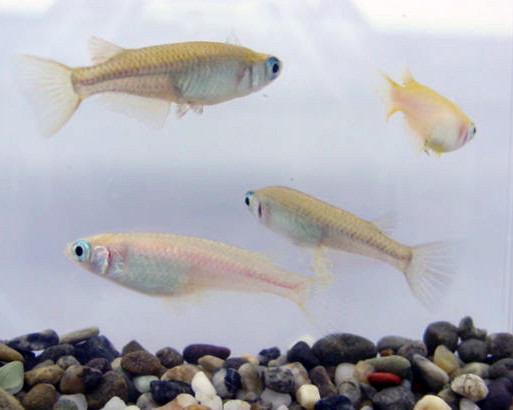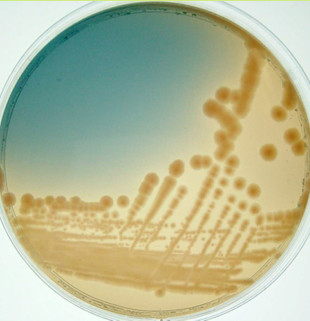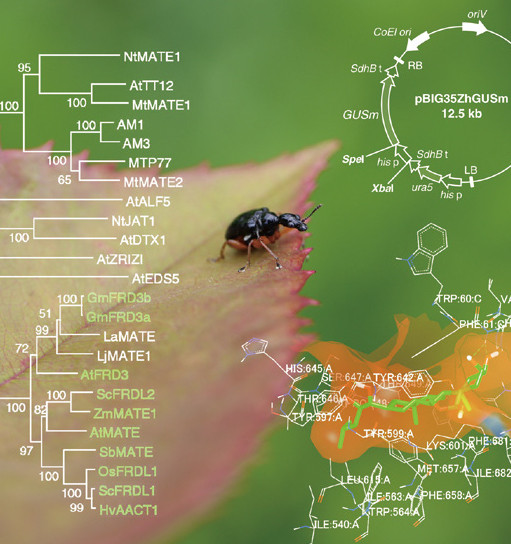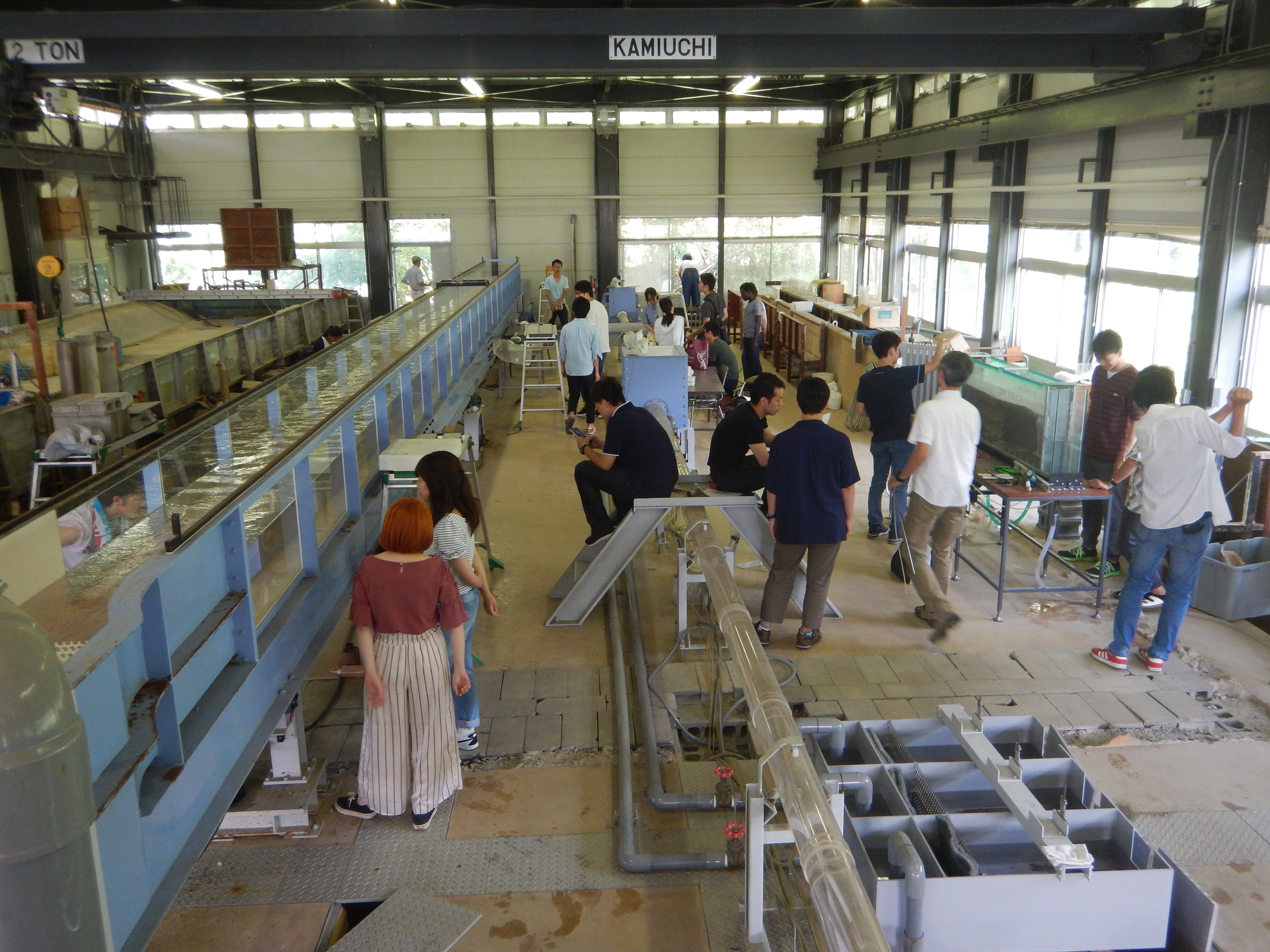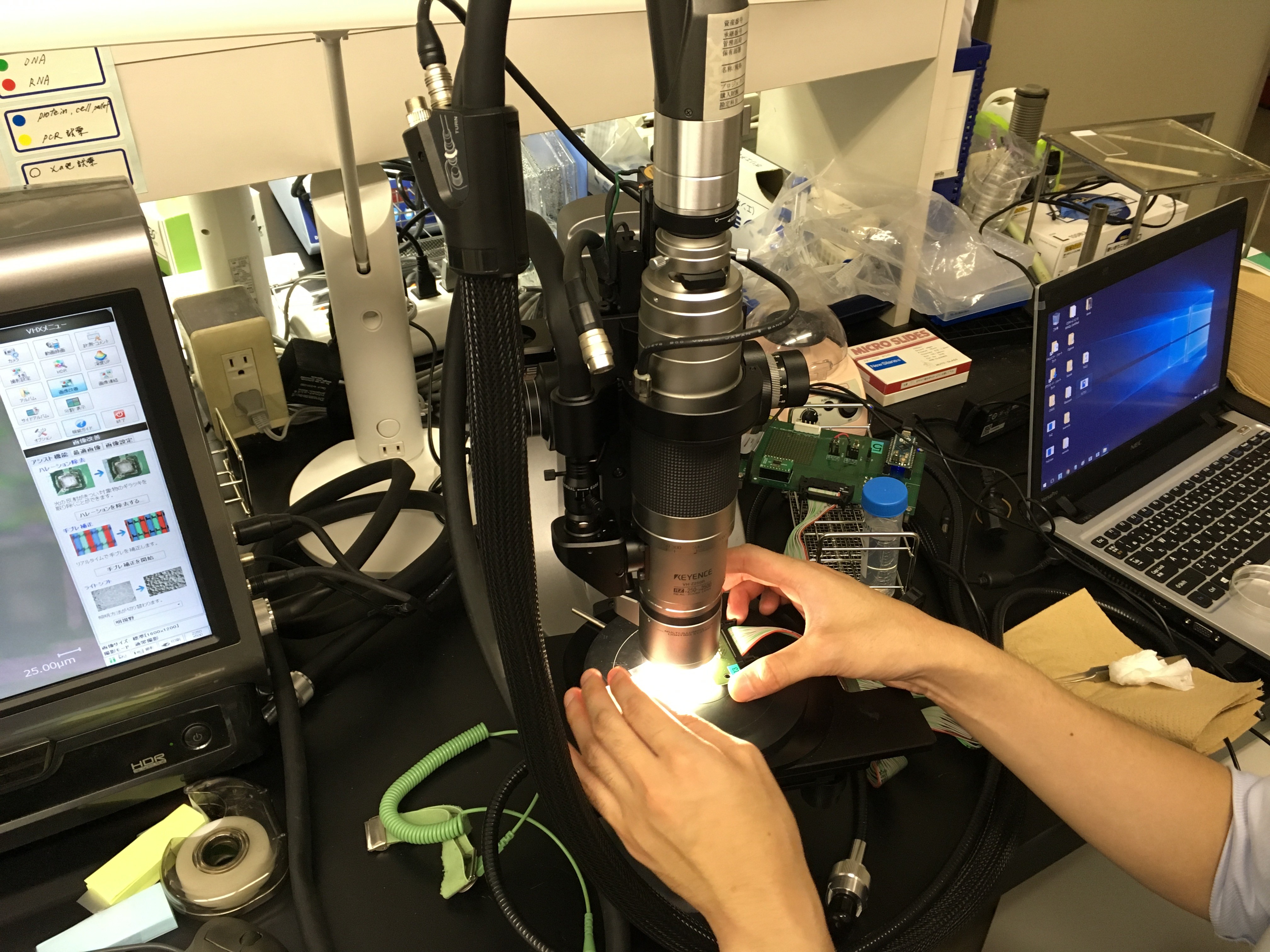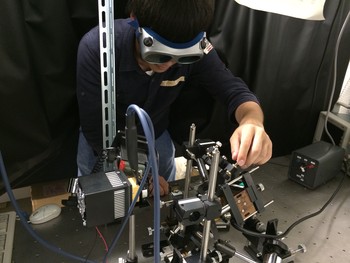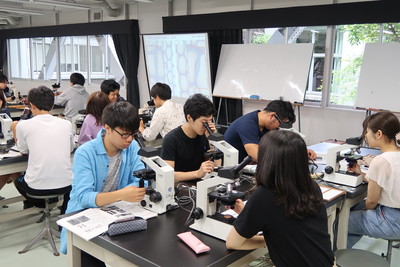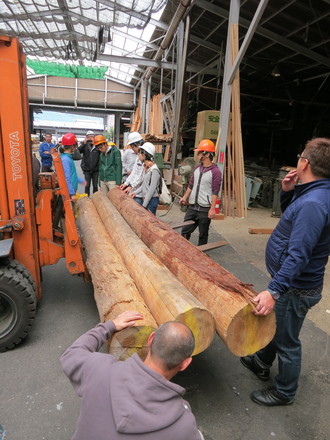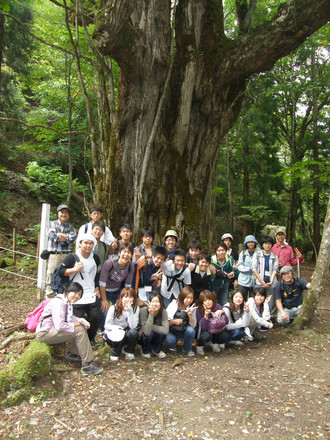Faculty of AGRICULTURE
Sciences for Life, Food, and Environment
Five departments offer opportunities to acquire academic and advanced knowledge and develop broadened perspectives.
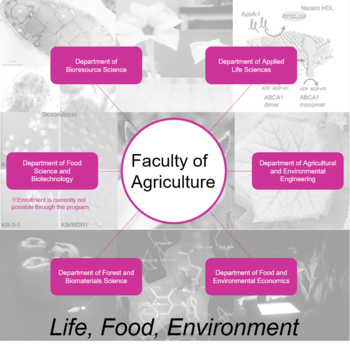 The objective of the Faculty of Agriculture is to provide opportunities to learn about agriculture and related knowledge and to nurture individuals with a solid sense of social responsibility. The Faculty supports the following objectives: (1) to ensure students develop broad perspectives enabling them to envision scientific solutions to address the challenges that mankind are facing, (2) to ensure students understand the significance of the agriculture, forestry, and fisheries industries, including the importance of food- and life science-related industries for society, and (3) to ensure students understand the latest developments in both natural and social sciences related to life, food, and environment. To achieve these objectives, the Faculty of Agriculture has six departments, all of which strive to create a liberal academic culture, one of the Faculty's most respected characteristics, intent on nurturing graduate, who view issues with an open mind and seek holistic solutions to problems.
The objective of the Faculty of Agriculture is to provide opportunities to learn about agriculture and related knowledge and to nurture individuals with a solid sense of social responsibility. The Faculty supports the following objectives: (1) to ensure students develop broad perspectives enabling them to envision scientific solutions to address the challenges that mankind are facing, (2) to ensure students understand the significance of the agriculture, forestry, and fisheries industries, including the importance of food- and life science-related industries for society, and (3) to ensure students understand the latest developments in both natural and social sciences related to life, food, and environment. To achieve these objectives, the Faculty of Agriculture has six departments, all of which strive to create a liberal academic culture, one of the Faculty's most respected characteristics, intent on nurturing graduate, who view issues with an open mind and seek holistic solutions to problems.
Human society coexists with various organisms, such as animals, plants, and microorganisms, on the Earth for our survival. To use these bioresources more sustainably, it is essential to acquire a deep understanding about the mechanisms, by which organisms maintain their life and the ways, in which ecosystems are constructed. Additionally, analysis through technological expertise and social science methodologies is also needed to ensure human activities support vital ecosystems. Students are required to obtain fundamental knowledge offered by the individual department, in which they major and to make active efforts to broaden their vision by extending their interest into related fields.
In next academic year, 5 of 6 Departments, namely the Department of Bioresource Science (Agricultural Biology), Department of Applied Life Sciences (Agricultural Chemistry), Department of Agricultural and Environmental Engineering, Department of Food and Environmental Economics and Department of Forest and Biomaterials Science offer opportunities to study in the Faculty of Agriculture.
Year 1 / Introductory learning
In the Faculty of Agriculture, students are enrolled in the individual department upon admission and follow a four-year education program specified by their departments. In addition to knowledge about natural sciences, such as biology, chemistry, and physics, methodologies used in social sciences must also be learned to study the agricultural sciences. The departments have established integrated curricula (lecture programs) that incorporate liberal arts subjects together with specialized subjects. It is important for first-year students not to limit their study within the disciplines selected in their departments in order to expand their base of knowledge. Therefore, first-year students should primarily concentrate on general education subjects, including subjects in natural sciences, humanities/social sciences, and foreign languages. They can also participate in health and physical education courses or add other subjects, including courses in international education, which provide opportunities for social exchanges with international students.
Years 2 and 3 / Enhanced learning
Second-year students take the basic courses in their specialized subjects in the second semester of Year 2 (autumn and winter) and prepare for a more intense specialized education in Year 3. In addition to lectures, the Faculty preferentially offers students opportunities to participate in specialized courses offering experiments, practical exercises, and seminars. In this way, students receive high-quality training in experimental techniques and methods, in preparation for specialized study later in their respective departments. The Faculty is one of the most enthusiastic at Kyoto University in terms of encouraging international exchange activities, sending many undergraduates to international institutions.
In the third year, students only take specialized subjects. Year 3 is an important year as the students take their first significant steps toward becoming researchers. The third year is when students must determine their study fields (laboratories). Third-year students are required to investigate their future career options by visiting laboratories and attending lectures with regularity. The departments have well-designed mechanisms to help assign third-year students to their laboratories.
Year 4 / Finalized learning
In Year 4, students work on research projects and assignments in their research fields throughout the year and prepare graduation theses. This is the first step they take as researchers by working on contemporary topics with graduate students under the supervision and mentorship of academic staff. Therefore, fourth-year students are devoted to their own research, as well as assigned work in their study field seminars. Students intent on pursuing advanced studies also need to prepare for the Graduate School entrance examination. The students who earn the required credits are awarded a bachelor's degree (in agriculture).
Study programs in the five departments
Department of Bioresource Science (Agricultural Biology)
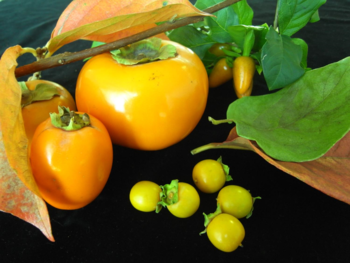 Humans have harnessed a vast diversity of plants, animals, and microorganisms that inhabit and flourish on the land or in the ocean--not just to sustain our livelihoods and activities, but also to support and enrich our daily lives. For centuries, humans have applied a great deal of effort and wisdom to find ways to grow and raise bioresources so as to maximize their potential and to develop environments suited for their habitation and growth, while at the same time improving such precious resources to better serve our purposes at any given time. These efforts have paid off to an extent, and an abundance of food and other necessities are within easy reach in some countries. On a global scale, however, humans are faced with the harsh reality that food production is not likely to keep pace with the population explosion of this century, and the excessive use of bioresources is severely damaging the global environment and destroying ecosystems. As this is the case, the citizens of earth are required to confront the momentous challenge of ensuring the stable production of bioresources and constantly increasing their productivity and quality. At the same time, we must achieve harmony with the environment and reduce negative impacts on ecosystems.
Humans have harnessed a vast diversity of plants, animals, and microorganisms that inhabit and flourish on the land or in the ocean--not just to sustain our livelihoods and activities, but also to support and enrich our daily lives. For centuries, humans have applied a great deal of effort and wisdom to find ways to grow and raise bioresources so as to maximize their potential and to develop environments suited for their habitation and growth, while at the same time improving such precious resources to better serve our purposes at any given time. These efforts have paid off to an extent, and an abundance of food and other necessities are within easy reach in some countries. On a global scale, however, humans are faced with the harsh reality that food production is not likely to keep pace with the population explosion of this century, and the excessive use of bioresources is severely damaging the global environment and destroying ecosystems. As this is the case, the citizens of earth are required to confront the momentous challenge of ensuring the stable production of bioresources and constantly increasing their productivity and quality. At the same time, we must achieve harmony with the environment and reduce negative impacts on ecosystems.
The Department of Bioresource Science offers a broad range of educational opportunities, from foundational knowledge to applied technology, in order to develop individuals who are ready to tackle this immense challenge. The Department covers as many as thirty-one specialized fields (see below for details) to study a diverse range of organisms, including food crops and other plant resources, livestock and other animal resources, and seafood and microorganisms in the ocean, from multifaceted perspectives on macro and micro levels, i.e., from populations and individuals to cells and molecules. Relatedly, efforts are being made to carry out various research projects, in a bid to protect each bioresource from invasive enemies, maintain preferred growth/habitation environments, and ensure high productivity in adverse environments. Some of those projects even attempt to create new species.
Due to the broad range of subjects and disciplines within this Department, the educational curriculum is structured into four course options as outlined in the table below. During the first and second years, students initially study bioresource science in its entirety. As they enter the third year, students select one of the courses based on their growing interests and affiliations. In their fourth year, students further narrow down their focus by choosing specific fields within their selected course.
| Course | Fields |
| Plant Production Science | Crop Science, Plant Breeding, Vegetable and Ornamental Horticulture, Pomology (Fruit and Fruit Tree Science), Plant Production Systems, Plant Production Control, Quality Analysis and Assessment, Food Quality Design and Development, Weed Science, Tropical Agriculture, Soil Science |
| Animal Science | Animal Breeding and Genetics, Reproductive Biology, Nutritional Science for Animals, Animal Physiology and Functional Anatomy, Animal Husbandry Resources, Bioresource Informatics |
| Marine Life Science | Fisheries and Environmental Oceanography, Marine Stock Enhancement Biology, Marine Microbiology, Marine Environmental Microbiology, Marine Bioproduct Technology, Marine Biological Function, Coastal Fisheries Ecology |
| Fundamental and Frontier Biology | Plant Genetics, Plant Physiology, Crop Evolution, Plant Pathology, Insect Ecology, Insect Physiology, Terrestrial Microbial Ecology, Ecological Information |
Keywords for Each Field of Affiliation
<Plant Production Science>
- Crop Science
Food production and the environment, crop productivity and genotype-environment interaction, environmental stress tolerance, growth and development prediction modeling, information measurement, environmentally conscious crop production technology - Plant Breeding
Breeding of wheat and soybean, genomic and genetic analyses of important agronomic traits, reproductive biology of crop plants, plant-microbe interaction in soil, resistance to biotic and abiotic stresses, utilization of genetic resources - Vegetable and Ornamental Horticulture
Environment control and growth and development control, development of functional vegetables, elucidation of flower color mutation mechanisms, breeding of useful varieties, application of organic matter to plants in an unsterile environment by using chlorination and insoluble phosphoric acids - Pomology (Fruit and Fruit Tree Science)
Fruit tree physiology of flowering and fruit set, fruit development/ripening mechanisms, fruit tree breeding and biotechnology, fruit tree molecular genetics, postharvest physiology of fruit
- Plant Production Systems
Agricultural production ecosystem, paddy-upland rotation, nitrogen cycle, environmentally friendly agricultural production system, remote sensing
- Plant Production Control
Genetic seedlessness in fruits vegetables, mechanism of selfish genes, elucidation of floral regulatory mechanism, cross combination and seed development, elucidation of fruit development and senescence mechanisms, development of postharvest technology, development and application of next-generation type crop model, farm system for generating crop and renewable energy together
- Quality Analysis and Assessment
Molecular mechanism on gustation, flavor, sensory evaluation, palatability, functional compound, mass spectrometry, metabolomics
- Food Quality Design and Development
Molecular design, food proteins and enzymes, food allergy, environmental allergy, plant protein utilization, antibody, protein engineering
- Weed Science
Weed management, life-history traits of weeds, herbicide-resistant biotypes of weeds, invasion/colonization and dissemination of invasive weeds, crop-weed complexes, mimetic weeds
- Tropical Agriculture
Agricultural resources, meteorological environment, water dynamics of soil and plants, environmental stress, cropping system analysis, changes in land utilization, distribution and transmission of crops, environment and physiology of tree crops, tropical horticulture, GIS
- Soil Science
Degradation of tropical land and arid land and soil management technology, material dynamics in the soil ecosystem, evaluation of and restoration from soil pollution, space variation analysis of soil characteristic values, analysis of soil nutrient supply mechanisms
<Animal Science>
- Animal Breeding and Genetics
Genetics of qualitative and quantitative traits, systems biology, omics analysis, big data analysis, genetic assessment, breed improvement, individual classification, preservation of animal resources and rare animals
- Reproductive Biology
Oocytes, preimplantation embryos, zygotic genome activation, cell differentiation, reprogramming, epigenetics, developmental origins of health and disease, mammalian embryogenesis, in vitro fertilization, transgenic animals, genome edition
- Nutritional Science for Animals
Comparative animal nutrition, nutritional physiology, adipocyte differentiation, vitamin nutrition, mineral metabolism, metabolic regulation by bioactive substances in food and feed
- Animal Physiology and Functional Anatomy
Evaluation of animals' physiological and producing functions, animals' ecophysiology and global warming, environmental pollution and endocrine-disrupting chemicals, cryopreservation of ovaries
- Animal Husbandry Resources
Multidisciplinary research on livestock production, biological, environmental, and economic evaluation of animal production systems, exploration of new feed resources
- Bioresource Informatics
Research on how to extract, analyze, and use the information on the utilization and conservation of bioresources in terrestrial and marine environments using big data, biotelemetry, and environmental DNA.
<Marine Life Science>
- Fisheries and Environmental Oceanography
Coastal ocean, conservation of the marine environment, fisheries oceanography, marine ecosystem mechanisms, transportation of organisms/substances, interactions among rivers, coastal seas, and open seas, mechanisms of eutrophication and poor oxygenation, stable isotope ratio, material cycle
- Marine Stock Enhancement Biology
Metamorphosis, hormone, organismal physiology, morphological abnormality, early life history, population structure, species diversity, interspecific hybridization
- Marine Microbiology
Marine hyperthermophilic archaebacteria, deep-sea hydrothermal environment, physiology and ecology of extremophiles, extremozymes, biohydrogen production, physiology and ecology of denitrifying bacteria, genomic analysis and genetic diagnosis of poisonous microalgae
- Marine Environmental Microbiology
Our research interests include microalgal productions of ω-3 fatty acids, carotenoids and biofuels by genetic analyses and engineering. In addition, we have studied ecophysiology and evolution of 'earth-eating' microorganisms inhabiting various extreme marine environments such as deep-sea hydrothermal fields.
- Marine Bioproduct Technology
Unused resources, functional food, search for physiologically active substances, physiology of highly unsaturated fatty acids, molecular control of lipid metabolism
- Marine Biological Function
Marine biological function, gene manipulation for fish, genome editing, fish genetics, genetic improvement of cultured fish, functional food, health promoting compounds in marine products, marine peptide, biological active compounds.
- Coastal Fisheries Ecology
Fisheries ecology, fish taxonomy, fish phylogeny, fisheries oceanography, marine plankton, marine benthos, commensalism, behavioral ontogeny, environmental DNA
<Fundamental and Frontier Biology>
- Plant Genetics
Wheat, cell genetics, genome, chromosome, disease resistance, polyploid, cytoplasmic inheritance, population genetics, evolution, hybrid incompatibility, speciation, bioinformatics
- Plant Physiology
Regulation of growth phase transition in response to environmental signals, flowering, long-distance systemic signaling in development (florigen), sexual reproduction process (especially germline specification and gametogenesis), origin and evolution of regulatory systems for plastic development
- Crop Evolution
Evolution of crop plants and their wild relatives, plant genomics and genetics, co-evolution of plants and humans, co-evolution of plants and pathogens, bioinformatics, ethnobotany, genetic resource management, fieldwork, natural history
- Plant Pathology
Plant pathogenic fungi, plant viruses, host specificity, plant immunity, virulence factors, generation of resistant plants, coevolution, molecular biology, omics, bioinformatics
- Insect Ecology
Evolutionary ecology, behavioral ecology, reproductive strategies, social insects, transgenerational epigenetic inheritance, self-organizing system, longevity
- Insect Physiology
Physiology, endocrinology, molecular genetics, genomics, developmental biology, evolutionary biology, evo-devo, eco-evo-devo
- Terrestrial Microbial Ecology
Mycology, fungal genetics, fungal adhesion and penetration mechanism, mode of action of fungicide
- Ecological Information
Interaction among agricultural fields, natural enemies, integrated pest management, biological control, spider mites and minute pest insects, molecular ecology, genetic variation, evolution of adaptive characters, insecticide resistance
Department of Applied Life Sciences (Agricultural Chemistry)
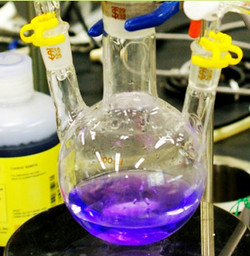 The 21st century is said to be the era of "bioindustry," and it is thought to be a time of progress for the environment, food, energy, health, and welfare. At the core of this fast-growing sector is biotechnology, a means of utilizing biological functions in advanced applications.
The 21st century is said to be the era of "bioindustry," and it is thought to be a time of progress for the environment, food, energy, health, and welfare. At the core of this fast-growing sector is biotechnology, a means of utilizing biological functions in advanced applications.
At the Department of Applied Life Sciences, students learn basic and advanced knowledge across a broad range of academic disciplines, giving them the ability to follow the principles of life phenomena. This in turn allows them to analyze various issues that may arise on the frontlines of agricultural production, the fermentation, food processing, and chemical industries, and environmental conservation, and then to apply their research findings to the burgeoning realm of biotechnology.
Our Department encompasses the 13 fields of education and research below, which cover a wide range of organisms--from humans to microbes. The underlying academic purpose here is to elucidate life phenomena on the molecular level. Targeting inorganic compounds, low-molecular organic compounds, and other biomolecules such as nucleic acids, proteins, lipids, and polysaccharides, we set for ourselves the task of bringing to light biofunctions that may be caused by properties of individual molecules as well as interactions among molecules. Another fundamental research topic is the elucidation of how biomolecules work in relation to their cell structures.
To serve these purposes, we offer a four-year integrated curriculum. In the first two years, students take common basic subjects of physical chemistry, organic chemistry, and biochemistry, as well as introductory subjects that cover the entire range of academic disciplines that our Department has to offer, so that they can set their own learning goals. In the last two years, students systematically learn a broad range of disciplines--from basic to applied research--that concern animals, plants, and microorganisms, while performing lab work and practical training carefully prepared for them to understand related theories empirically. In the fourth year, students are assigned to laboratories, where they learn about approaches and attitudes toward creative research as they work on new challenges as budding researchers.
Through this curriculum, we develop self-driven biotechnology researchers and engineers who can respond to societal demands. Successful students must be motivated with a sharp and clear vision and be fully prepared to challenge themselves to attain their educational objectives.
Through its research and education, the Department of Applied Life Sciences aims to develop students who:
- Study organisms and life phenomena deeply at the cellular and molecular levels and understand them in a chemical context;
- Understand the commonality and diversity of biofunctions of microorganisms, plants, and animals;
- Spearhead new discoveries and inventions to applied research; and
- Gain skill with research approaches and logical thinking through the aforementioned research experience and make the most of applied education through lectures by guest speakers from private enterprises and visits to plants.
Keywords for Each Field of Affiliation
- Cellular Biochemistry
Extracellular matrix, collagen, cell adhesion, cholesterol homeostasis, signal transduction, structure and functions of membrane proteins, migration and metastasis of cancer cells
- Biomacromolecular Chemistry
Correlation between dynamic structure and functional expression of biological macromolecules based on atomic-level measurements, elucidation of mechanisms of gene expression, and basic and applied research on life, health, and food
- Bioregulation Chemistry
Organic chemistry, mass spectrometry, bioactive molecules, animal toxins, crop protection
- Chemical Ecology
Chemical interpretation of survival strategies of living organisms, specifically plant stress tolerance, insect adaptations, host-discrimination substances, defence compounds and insect hormones, based on organic chemistry of physiologically active substances
- Plant Nutrition
Molecular mechanism of photosynthesis, plant nutrition and growth, plant metabolism and functions, environmental, stress and plants, algal biotechnology
- Fermentation Physiology and Applied Microbiology
Applied microbiology, including fermentation, stemmed from screening and breeding of useful microorganisms with unique functions for useful substance production, health promotion, crop and food production, environmental control, and ecosystem management
- Microbial Biotechnology
Metabolism and physiology of C1-microorganisms, heterologous protein production, organelle dynamics, plant-microbe interaction, redox dynamics, bioconversion of methane
- Bioanalytical and Biophysical Chemistry
Bioelectrochemistry, charge transport across biomembranes, neurotransmission and cell-to-cell communication, drug delivery and bioaccumulation, enzymatic catalysis chemistry, chemical sensors and biosensors, biofuel cells
- Biofunctional Chemistry
Chemical biology, organic chemistry, plant regulator, protein-protein interaction, plant hormone signaling, transcription factor
- Applied Structural Biology
Appearance and workings of proteins, X-ray crystallography, folding of polypeptides, functional improvement of proteins
- Molecular Microbiology
Metabolic stress and signaling, microbial biotechnology, microbial genome science, mechanism of gene expression, mechanism of response to environmental stress, reactive oxygen species and biological defense system, proteomics and metabolome.
- Molecular and Cellular Biology
Plant chemical biology, molecular mechanism of plant growth and chloroplast biogenesis, plant biotechnology to create novel crops and vegetables
- Plant Molecular Biology
Environmental response of photosynthetic organisms, reproduction of plants, genome science of plants, gene expression control, molecular genetics
Department of Agricultural and Environmental Engineering
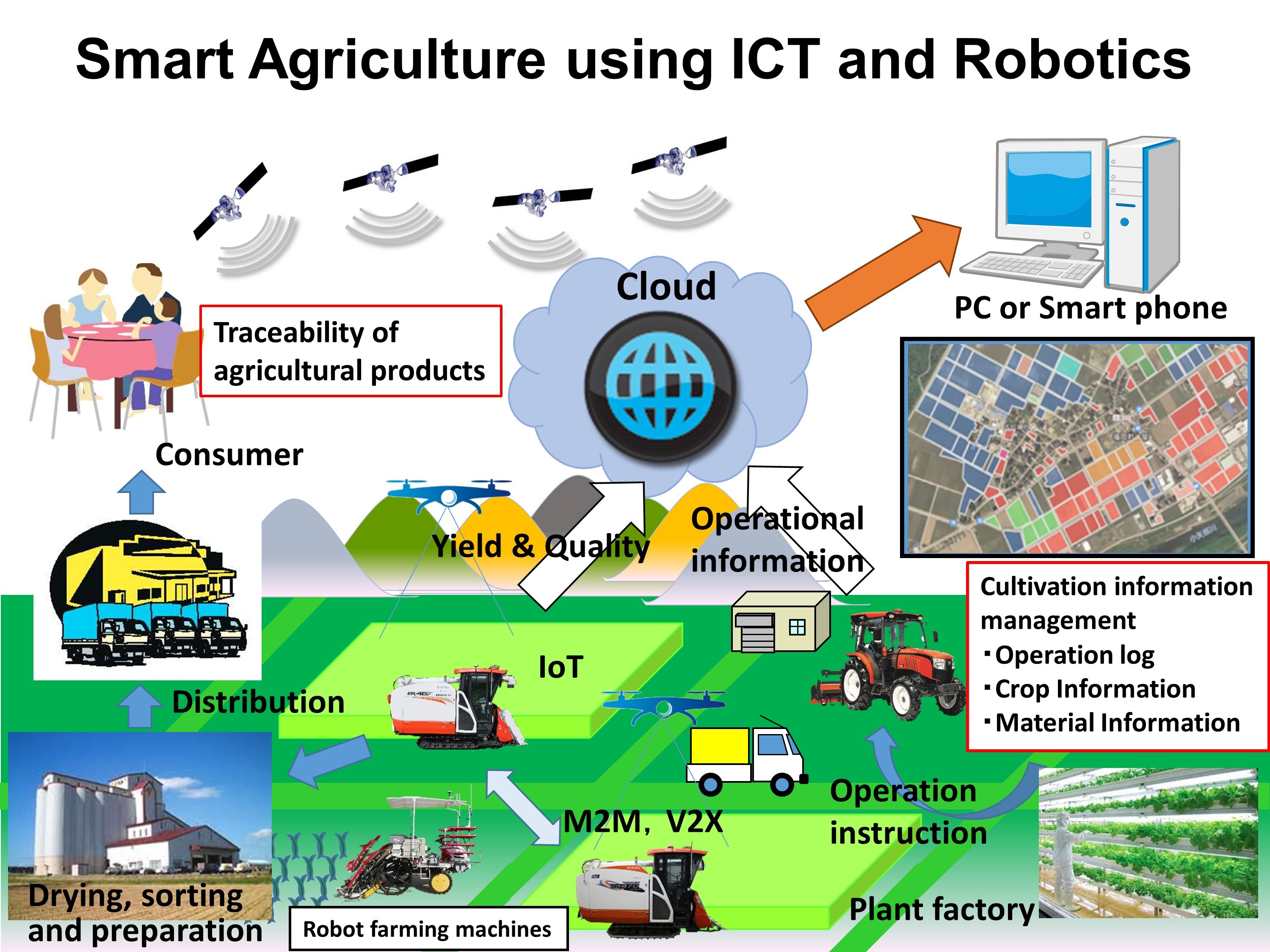 Food security is the most vital necessity for the survival of humanity. In this respect, agriculture is one of the most sublime and fundamental human activities, playing an integral part in the process of food production. It is believed that agriculture (cultivating plants and livestock) dates back roughly 10,000 years. The "discovery" of agriculture (i.e., a new method of procuring food whose carrying capacity was much higher than that of conventional ways of hunting and gathering) led humankind on to a path of rapid evolution. From that point onward, humans have utilized wisdom and innovation to advance and sustain the art of agriculture while meeting the needs of our times. At the same time, progress in engineering and technology that form the foundations of agricultural production has been instrumental in enhancing the productivity of land and agriculture workers. This is evidenced by the fact that the Faculty of Agriculture, Kyoto University had an engineering department (the Department of Agriculture and Forestry Engineering, later reorganized into an engineering department, the Department of Agriculture Engineering, to specialize in agriculture studies) since its inception in 1923 to conduct pioneering education and research on engineering/technical strategies and methodologies that maximize agricultural productivity. Towards the end of the last century, the emergence of global issues that could threaten the survival of humankind promoted a paradigm shift, and it also became necessary in the engineering field to redesign our basic research approaches to and perspective on the world under the more comprehensive and contemporary framework of "the environment." Based on this background, the Department of Agricultural and Environmental Engineering came to be in 2001.
Food security is the most vital necessity for the survival of humanity. In this respect, agriculture is one of the most sublime and fundamental human activities, playing an integral part in the process of food production. It is believed that agriculture (cultivating plants and livestock) dates back roughly 10,000 years. The "discovery" of agriculture (i.e., a new method of procuring food whose carrying capacity was much higher than that of conventional ways of hunting and gathering) led humankind on to a path of rapid evolution. From that point onward, humans have utilized wisdom and innovation to advance and sustain the art of agriculture while meeting the needs of our times. At the same time, progress in engineering and technology that form the foundations of agricultural production has been instrumental in enhancing the productivity of land and agriculture workers. This is evidenced by the fact that the Faculty of Agriculture, Kyoto University had an engineering department (the Department of Agriculture and Forestry Engineering, later reorganized into an engineering department, the Department of Agriculture Engineering, to specialize in agriculture studies) since its inception in 1923 to conduct pioneering education and research on engineering/technical strategies and methodologies that maximize agricultural productivity. Towards the end of the last century, the emergence of global issues that could threaten the survival of humankind promoted a paradigm shift, and it also became necessary in the engineering field to redesign our basic research approaches to and perspective on the world under the more comprehensive and contemporary framework of "the environment." Based on this background, the Department of Agricultural and Environmental Engineering came to be in 2001.
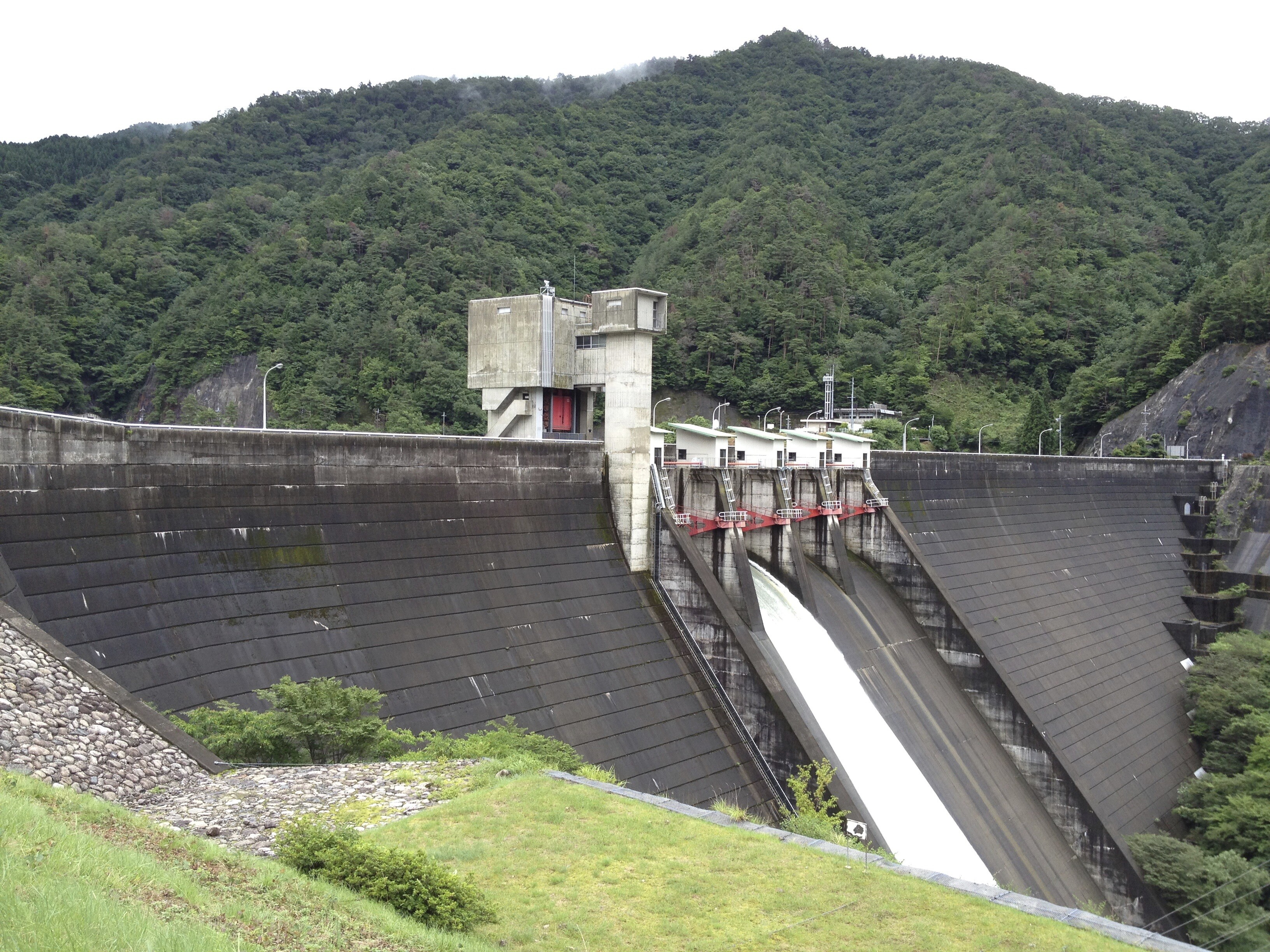 This Department is devoted to research and education on the use of engineering and technology in "agricultural and farming regions;" namely, rural regions in which people engage in agricultural production activities for a living. Recent years have seen a growing recognition that rural regions have much more distinguishing precious features, compared to urban regions. This renewed recognition is chiefly attributable to the multifunctionality of agriculture, which serves the preservation of national land, the natural environment and ecosystems, on top of its inherent function of food production. Now, for rural regions to develop in a sustainable manner, it is necessary to properly develop and preserve water and soil (land), two key elements of environmental infrastructure in such regions, the production environment, such as production control systems and systems for harvesting, processing, and storing farm products, and the living environment in the regions. At the same time, harmony with the natural environment must be achieved. It is also important to utilize wisely potential resources unique to the rural regions, such as the development of biomass energy. The concept of "achieving harmony with the natural environment" means to stop to think how humankind should produce food and develop energy, both of which are necessary for human survival, while working in harmony with biosystems, ecosystems, and landscapes by respecting their inherent right. "All regions are cells of planet Earth," and maintaining a sound regional environment is vital for the conservation of the global environment. To make this ideal state of rural regions a reality, it is crucial to pursue engineering and technology studies in the realm of applied science based on the solid foundations of interdisciplinary fundamental sciences, with fields ranging from natural science to social science. Studies of agricultural and environmental engineering take scientific approaches to rural regions within such a paradigm. As a body of engineering and technological knowledge, these systematic studies are expected to play a significant role in solving the problems that threaten the survival of humankind, including those concerning agriculture and farming villages, the environment, and food and energy.
This Department is devoted to research and education on the use of engineering and technology in "agricultural and farming regions;" namely, rural regions in which people engage in agricultural production activities for a living. Recent years have seen a growing recognition that rural regions have much more distinguishing precious features, compared to urban regions. This renewed recognition is chiefly attributable to the multifunctionality of agriculture, which serves the preservation of national land, the natural environment and ecosystems, on top of its inherent function of food production. Now, for rural regions to develop in a sustainable manner, it is necessary to properly develop and preserve water and soil (land), two key elements of environmental infrastructure in such regions, the production environment, such as production control systems and systems for harvesting, processing, and storing farm products, and the living environment in the regions. At the same time, harmony with the natural environment must be achieved. It is also important to utilize wisely potential resources unique to the rural regions, such as the development of biomass energy. The concept of "achieving harmony with the natural environment" means to stop to think how humankind should produce food and develop energy, both of which are necessary for human survival, while working in harmony with biosystems, ecosystems, and landscapes by respecting their inherent right. "All regions are cells of planet Earth," and maintaining a sound regional environment is vital for the conservation of the global environment. To make this ideal state of rural regions a reality, it is crucial to pursue engineering and technology studies in the realm of applied science based on the solid foundations of interdisciplinary fundamental sciences, with fields ranging from natural science to social science. Studies of agricultural and environmental engineering take scientific approaches to rural regions within such a paradigm. As a body of engineering and technological knowledge, these systematic studies are expected to play a significant role in solving the problems that threaten the survival of humankind, including those concerning agriculture and farming villages, the environment, and food and energy.
Education at the Department of Agricultural and Environmental Engineering is given mainly in seven research fields, which are divided into four fields of the "Rural Environmental Engineering" and three of the "Bioproduction Engineering." The first- and second-year students gain a basic overview of agricultural and environmental engineering, while third-year students mainly take subjects from a family to which the field that they plan to be affiliated with in their fourth year belongs.
In the fields of the "Rural Environmental Engineering" which consists of 4 fields (Agricultural Facilities Engineering, Water Resources Engineering, Hydrological Environment Engineering, and Rural Planning), students learn about theories for creating rich and beautiful regional environments that encompass production, living, and natural spaces. They also go on to learn how to improve and conserve such regional environments with engineering techniques that work on water, soil, and the environment, as well as study the technological approaches needed to achieve this. Students also learn how to utilize water and land in a regional setting with the conservation of national land and the environment in mind, along with how to plan, design, construct, and maintain various structures that give a concrete shape to their learning outcomes.
In the fields of the "Bioproduction Engineering" which consists of 3 fields (Agricultural Systems Engineering, Field Robotics, and Bio-Sensing Engineering), students learn how they should go about controlling production, harvesting, processing, and storing food, and developing biomass energy. They do so while considering not only the local natural environment but also the global environment, resource circulation, labor-saving, and energy-saving, as well as learning their underlying principles. Students are also expected to learn the skills and methodologies needed to realize all of the above. To this end, students study relevant bioresources, information processing, systems design, measurement and sensing technologies for organisms, machine design, robotics, physical properties of farm products and their non-destructive quality evaluation, and processing technology.
Keywords for Each Field of Affiliation
<Rural Environmental Engineering>
- Agricultural Facilities Engineering
Storage dams, underground dams, water facility design theory, analysis of water-use structure inverse problems, constitutive equation and structures of soil, geotomography of foundation ground, seismic design of structures
- Water Resources Engineering
Optimal management of water resources and hydro-environments, hydro-environment modeling, dynamics of farm irrigation systems, rainwater harvesting, multiple functions of reservoirs and paddy fields for agriculture
- Hydrological Environment Engineering
Irrigation and drainage, soil physics, hydrology, hydrochemistry, regional water and geochemical cycle management, groundwater management, water and soil quality conservation, agricultural water management for climate change adaptation and mitigation
- Rural Planning
Rural sustainability, community development planning, rural revitalization, landscape planning, participatory planning tools, resource management, resilience building, social capital, knowledge management, system modeling, multi-agent simulation, virtual reality, information communication technology and drama theory
<Bioproduction Engineering>
- Agricultural Systems Engineering
Biomass energy, optimization of food production, system analysis, LCA for environmental management, resource recycling, methane fermentation, sensing and data analysis for soil, plant, and environment, data science
- Field Robotics
Robot farming, intelligent farm machinery, precision agriculture, remote sensing, monitoring of plant growth, GPS/GIS, artificial intelligence (AI) for agricultural machinery, harmful animal repelling system by AI
- Bio-Sensing Engineering
Physical properties of agricultural and aquacultural products and foods and their non-destructive quality evaluation, near-infrared spectroscopic imaging, prediction of peak ripeness, freshness determination, detection of rice bran traces, identification of individual farm animals by biometric authentication techniques, traceability, food manufacturing process monitoring technology
Department of Food and Environmental Economics
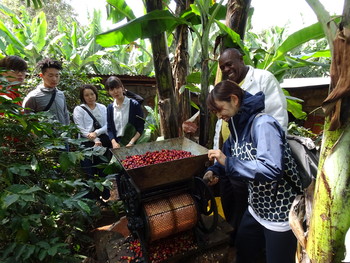 Of the challenges that humankind faces today, those concerning food and environment are particularly relevant to everyday life. Although they are faced differently depending on the context, food issues and environmental problems arise in both developed and developing countries, regardless of political and economic system. Indeed, they are increasingly understood as the consequence of economic policies fixated on growth and rapid development. With growing awareness of our declining natural resources, more emphasis has been placed on the possibilities for sustainable development. To bring about such an alternative development path, governments around the world need to not only adjust their domestic policy, but also to coordinate with their counterparts at the global level to ensure that progress can be achieved collaboratively at the international scale. Unlike manufacturing industries, which rely on inorganic resources and global commodities, agriculture, forestry, and fisheries have a uniquely local character that is rooted in natural ecosystems and communities. Here, sustainable development means achieving harmony between economic output, environmental conservation, and local culture. We strongly believe that since food and environmental problems are the byproducts of human institutions and economic systems that humans can also solve these problems.
Of the challenges that humankind faces today, those concerning food and environment are particularly relevant to everyday life. Although they are faced differently depending on the context, food issues and environmental problems arise in both developed and developing countries, regardless of political and economic system. Indeed, they are increasingly understood as the consequence of economic policies fixated on growth and rapid development. With growing awareness of our declining natural resources, more emphasis has been placed on the possibilities for sustainable development. To bring about such an alternative development path, governments around the world need to not only adjust their domestic policy, but also to coordinate with their counterparts at the global level to ensure that progress can be achieved collaboratively at the international scale. Unlike manufacturing industries, which rely on inorganic resources and global commodities, agriculture, forestry, and fisheries have a uniquely local character that is rooted in natural ecosystems and communities. Here, sustainable development means achieving harmony between economic output, environmental conservation, and local culture. We strongly believe that since food and environmental problems are the byproducts of human institutions and economic systems that humans can also solve these problems.
The Department of Food and Environmental Economics aims to find solutions to these problems using a diverse social science approach, while at the same time absorbing relevant knowledge and experience from the natural science approach of the departments in the Faculty of Agriculture. This organization allows us to determine how research findings can be applied and accepted in the real world, with the ultimate goal of encouraging more progressive and interdisciplinary scientific approaches in the agricultural sciences.
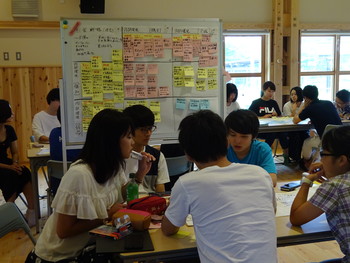 To this end, we deliberately look at agricultural production in a broader cultural and economic context. While other departments in the Faculty of Agriculture adopt predominantly natural science methods, this Department alone advocates a social science approach, rooted in the belief that this can better clarify the nexus of human and natural activities that comprise agriculture. In more concrete terms, we study the characteristics of people working in agriculture, forestry, fisheries, and livestock businesses as well as the social and economic contexts, such as the farm, mountain, and fishing villages they work in, with an eye toward developing rural industries sustainably and equalizing conditions with urban areas. To balance conservation of local environment and culture at both regional and global levels with the need to encourage economic advancement, we draw insight from international studies of agriculture, rural and urban community development studies, and environmental management as well as relevant industries.
To this end, we deliberately look at agricultural production in a broader cultural and economic context. While other departments in the Faculty of Agriculture adopt predominantly natural science methods, this Department alone advocates a social science approach, rooted in the belief that this can better clarify the nexus of human and natural activities that comprise agriculture. In more concrete terms, we study the characteristics of people working in agriculture, forestry, fisheries, and livestock businesses as well as the social and economic contexts, such as the farm, mountain, and fishing villages they work in, with an eye toward developing rural industries sustainably and equalizing conditions with urban areas. To balance conservation of local environment and culture at both regional and global levels with the need to encourage economic advancement, we draw insight from international studies of agriculture, rural and urban community development studies, and environmental management as well as relevant industries.
The Department of Food and Environmental Economics is divided into eight fields of education and research, which can be roughly clustered into three groups, as outlined below.
The first group covers two fields, in which students learn micro-level approaches to identify and solve challenges that stakeholders in agri-food systems are facing. In this group, students study agricultural business management and accounting information systems to explore decision-making process at both individual farm and agricultural organization levels. The second group comprises four fields that provide students with a micro- and macroscopic approach to resource and environmental problems on a regional level using rigorous empirical analysis. In these fields, students have opportunities to encounter current food and environmental problems from regional and national perspectives and then learn basic theories about conservation and development of regional environmental resources, policies for agriculture and forestry, and the development of farming communities in developing countries. The third group includes two fields in which students consider issues of food, agriculture and farming communities on the basis of history and philosophy, learn basic techniques to discover how such issues have evolved, and conduct cross-national comparisons. In these fields, students are given opportunities to examine the industrial and post-industrial aspects of agriculture, forestry, and fisheries and food system development, as well as the impact that historical trends have had in shaping farming communities, rural-urban relationships and, more generally, agriculture as a field of science.
Keywords for Each Field of Affiliation
- Agri-Food System Management
Management and structure/behavior of agri-food organizations, environmental changes and development of farm management, distribution and marketing of agricultural products, comparative institutional analysis of farm management around the world, roles of family-run farming, food system/agribusiness, fair trade, agricultural/consumer cooperatives, food safety management
- Farm Managerial Information and Accounting
Decision support systems for farm management, agricultural knowledge and innovation systems (AKIS), agricultural informatics for technologies and accounting, farm planning and risk assessment with mathematical programming, agricultural skills development
- Regional Environmental Economics
International and domestic food supply/demand and environmental problems, sustainable development of regional economies and environmental conservation, farm product trade and regional environments, technical change and productivity of agricultural sector, agricultural land issues, problems in hilly and mountainous areas and subsidies, commons and regional resilience
- Agricultural and Environmental Policy
Global environmental problems, outlook of food supply/demand, multiple functions of agriculture and farming communities, external economic effects, import liberalization of farm produce, economic analysis of food safety, agriculture and biodiversity, GIS
- Forest Policy and Economics
Forest resources in Japan and abroad, forestry production, forestry and lumber industries, production, supply, distribution, and consumption of timber, timber trade and environmental system, revitalization of mountain villages, ecosystem management, environmental functions of forests
- International Rural Development
Agricultural development, poverty, rural institutions, income inequality, consumption smoothing, social capital, culture, risk sharing, area studies, field survey, political economy, field experiment, development economics
- Comparative Agricultural History
Development patterns of socioeconomy and agriculture, history of relationships between urban and rural communities, history of relationships between agriculture and nature (technology, production capacity), history of farmers/history of farming communities/history of farmer movements, modern world-systems and agricultural problems and policies
- Philosophy of Agricultural Science
Roles of agriculture, forestry, and fisheries in various human societies, changes in agriculture and farming communities around the world, issues and methodologies of new agricultural science, world food problems, exchange and unification between urban and farming communities
Department of Forest and Biomaterials Science
Excessive and non-sustainable use of resources drives many global environmental problems. The Department of Forest and Biomaterial Sciences is working to set new social and research priorities toward sustainable and environmentally friendly uses of natural resources along with harmonious coexistence between nature and humankind. Forests cover 31% of the earth's land area, providing various ecosystem services such as production of renewable resources. Conservation of forest ecosystems and sustainable use of forest-based resources are necessary for survival of the humankind. More than ever, we need talented young people who can develop innovative strategies based on scientific understanding of forests and forest resources in order to tackle global environmental issues.
The Department of Forest and Biomaterials Science promotes research and education to nurture young researchers. As basic research topics, we study biodiversity and ecosystem matter cycles in forests and analyze chemical and physical properties of wood, cellulose and various organic substances. As applied research topics, we study greenhouse gas emission and sustainable resource cycle options. In addition to natural science approaches, we use sociological and economic approaches. Through collaboration among researchers from diverse fields of specialization, we promote integrative science on forests and biomaterials. In educational activities, we aim to nurture broad perspectives on forest science and investigative minds.
The Department of Forest and Biomaterials Science has 17 laboratories, covering a wide range of research topics. They can be grouped roughly into three areas. Six laboratories in the first area, "Forest Biology", "Forest Ecology", "Tropical Forest Resources and Environments", "Forest Hydrology", "Forest Utilization", and "Biosphere Informatics", conduct basic and applied research on forest ecosystem. The eight labs in the second area, i.e., "Wood Processing", "Biomaterials Design", "Fibrous Biomaterials", "Tree Cell Biology", "Chemistry of Composite Materials", "Chemistry of Biomaterials", "Forest Biochemistry", and "Energy Ecosystems", conduct basic and applied studies on biomaterials. The three labs in the third area, i.e., "Forest Resources and Society", "Landscape Architecture", and "Erosion Control", study management of forests and landscapes, as well as disaster preventions in forested hills and mountains. In addition to these 17 core laboratories, the Field Science Education and Research Center and the Research Institute for Sustainable Humanosphere support our research and education through their field research centers in Hokkaido and northern Kyoto, or through their large and advanced experimental facilities.
During the first three years of our curriculum, undergraduate students build foundational and comprehensive knowledge on forest and biomaterials science through lecture courses, and through field and lab courses. During the senior year (4th year), students join one of the 17 laboratories to conduct thesis research. Through our 4-year undergraduate curriculum, students obtain knowledge on forests and biomaterials, high ethical standard, and a capacity toward research innovations.
-

Landscape study of historical building
-
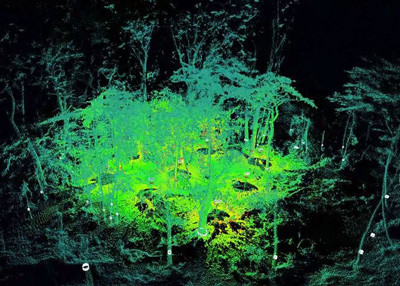
Reconstructed forest structure from laser scanning
-

Nano-celullose vehicle body for sustainable future (Provided by Ministry of the Environment Government of Japan)
Keywords for Each Field of Affiliation
- Forest Resources and Society
Sustainable forest management, forest commons, production and distribution of timber and non-timber forest products, forest planning, forest certification scheme, political ecology, forest culture, forest space utilization, livelihood transformation, community forestry, social impact assessment
- Tropical Forest Resources and Environments
Tropical trees, forest ecosystems, plant functional traits, forest stand structures, light utilization, seedling regeneration, plant-soil interactions, ecosystem matter cycles, sustainable forest management, climate-change mitigation and adaptation
- Forest Utilization
Carbon cycle, forest production, gas exchange, methane flux, phloem function, dynamics and function of woody root, forest management, stable isotopes, GIS
- Forest Biology
Forest structure and dynamics, biodiversity conservation, phylogenetic and ecological analysis of forest organisms based on genetic/genomic information, prevention of forest damage caused by wildlife, interaction between forest insects and trees, insect damage control
- Landscape Architecture
History of gardens, landscape planning and design, urban parks, nature parks, landscape ecology, urban forestry, nature restoration, revegetation technology
- Erosion Control
Prevention and mitigation of sediment disasters, impact of forest management on rainwater discharge, impact of forest management on sediment discharge, rainwater holding capacity of forest soil, prediction and forecast of debris flow, mechanisms of slope failure and landslides, warning and evacuation system against sediment disasters
- Forest Ecology
Forest ecosystems, biodiversity, ecosystem functions, plant adaptations and evolutions, forest production sciences, ecophysiology, landscape ecology, plant-soil interactions, plant-animal interactions, tree breeding, nature conservation, sustainable forestry, remote-sensing, global ecology from the arctic to the tropical
- Forest Hydrology
Hydrological cycle, carbon cycle, gas exchange, ecosystem fluxes, plant-water relations and eco-physiology, methane dynamics, precipitation-runoff response, water quality formation, longterm monitoring
- Biosphere Informatics
Geographical information systems, remote sensing, ecosystem modeling, conservation ecology, ecosystem service evaluation, environmental observation methods, ecological/environmental information systems and database, forest-human relationships
- Biomaterials Design
Physical and mechanical properties of wood, internal stress of wood, image analysis of wood surfaces, wood and human relations
- Wood Processing
Technologies of wood processing, nondestructive evaluation of wood property and degradation of wood, automatic recognition of wood, utilization and processing technology of wood-based materials
- Fibrous Biomaterials
Structure and properties of cellulose and other polysaccharides, synthesis of polysaccharides by genetically engineered enzymes, functionalization of polymers by magnetic field orientation, development of novel NMR/MRI methods, image analysis and machine learning for understanding wood and cellulose structure
- Tree Cell Biology
Structural diversity and systematic and quantitative anatomy of woody plants, formation and ultrastructure of plant cell walls, development of specific immunocytochemical probes for detecting cell wall components
- Chemistry of Composite Materials
Elaborate design of macromolecular structure, block/graft copolymers, polymer blends, liquid crystalline polymers, biodegradable plastics, nanocellulose-based functional materials, structure-property-performance relationships
- Chemistry of Biomaterials
Organic chemistry of biomass, elucidation of structure, properties, physiological bioactivity, and functions of cellulose, hemicelluloses, lignin, and extracts (tannin) and their utilization, efficient use of tropical forest produce
- Forest Biochemistry
Material cycle of forests, molecular biology of wood-rot fungi, genetic engineering, genome editing, biodegradation mechanism of wood, biotechnology of fungi, genetic pollution, sporeless cultivar, cell wall engineering of mushrooms, mycelial materials, mushroom leather, vegan meat, mycelial composite, sustainable biomaterials
- Energy Ecosystems
Biomass, bioenergy, biochemicals, bioethanol, biodiesel, high temperature wood chemistry, molecular level thermal degradation mechanism, reaction control of pyrolysis/gasification, supercritical fluids, plasma treatment




